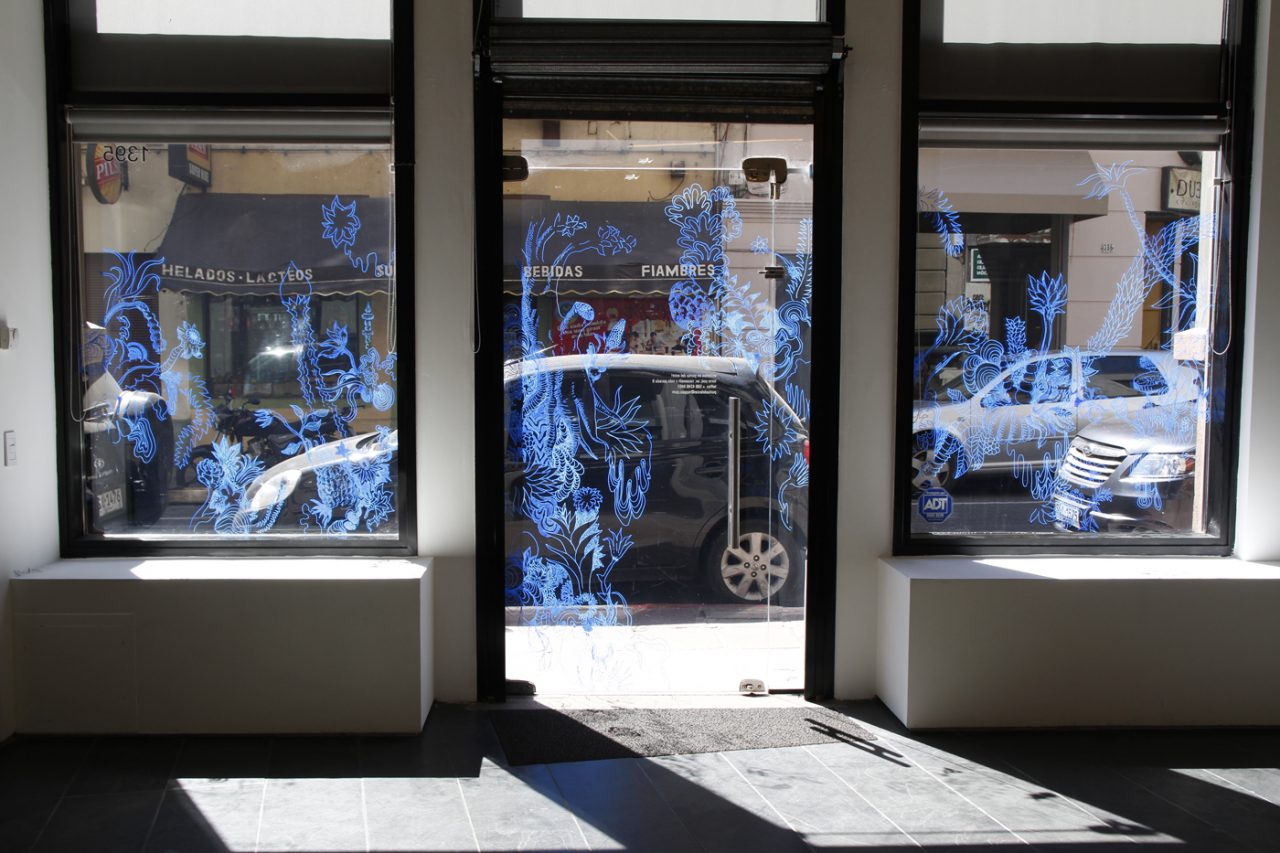Varela’s work is constituted with an ever-increasing consistency. Even in his paintings, the instance of the drawing and its subtle delicacy – characteristics of phases of once – are present. His paintings feed on the design and vice versa. Varela abdicates the ‘planner’ characteristics of design, to include it, experience it, and condense it in the painting.
Furthermore, the watery acrylic employed by the artist rearranges what we could otherwise think of as an error. The overflow of the ink is not a fluke. Instead, marks, textures and stains weave an atmosphere that reinforces the idea that nature is fluctuating.
That ethereal side, built on a play of shadows and volumes, denotes the suspension of matter. The fact that Varela removes objects from their banality and ordinariness, allows us to find resonance in the adopted influences of the artist: Archimboldo, Eckhout and Guignard. The latter, even more, because of the problem based performance of his work in the concept of the so-called landscape painting, and especially in his taste for the whimsical and decorative.
In the work of Varela, the “traditional model” of still life is replaced by vegetation inhabiting the boundary between fantasy and reality. We could wonder if these plants exist, perhaps in the leagues at the bottom of the sea, and therefore would never have the certainty of their existence. Varela gradually presents the mapping of an imaginary world, as if some form at some point might exist, eventually connecting with the “fabrications produced by the real world ” as in literature (fantastic, to Jules Verne) or at the movies (science fiction movies or so-called “adventure films”). This contradiction, of the appearance of the shape- is explored by the historical difficulty of finding the blue pigment.
His still-lifes range from a stereotype (psychedelic) of the tropical to the kitsch. The so- called landscape painting, as well as the development of still life and the portrait in the history of Brazilian art between the seventeenth and nineteenth centuries, has the characteristic of building an identity and a place that does not necessarily correspond to reality, but that has created and sustained for a long time, a number of myths and allegories about what Brazil should be.
Felipe Scovino, January 31, 2012
